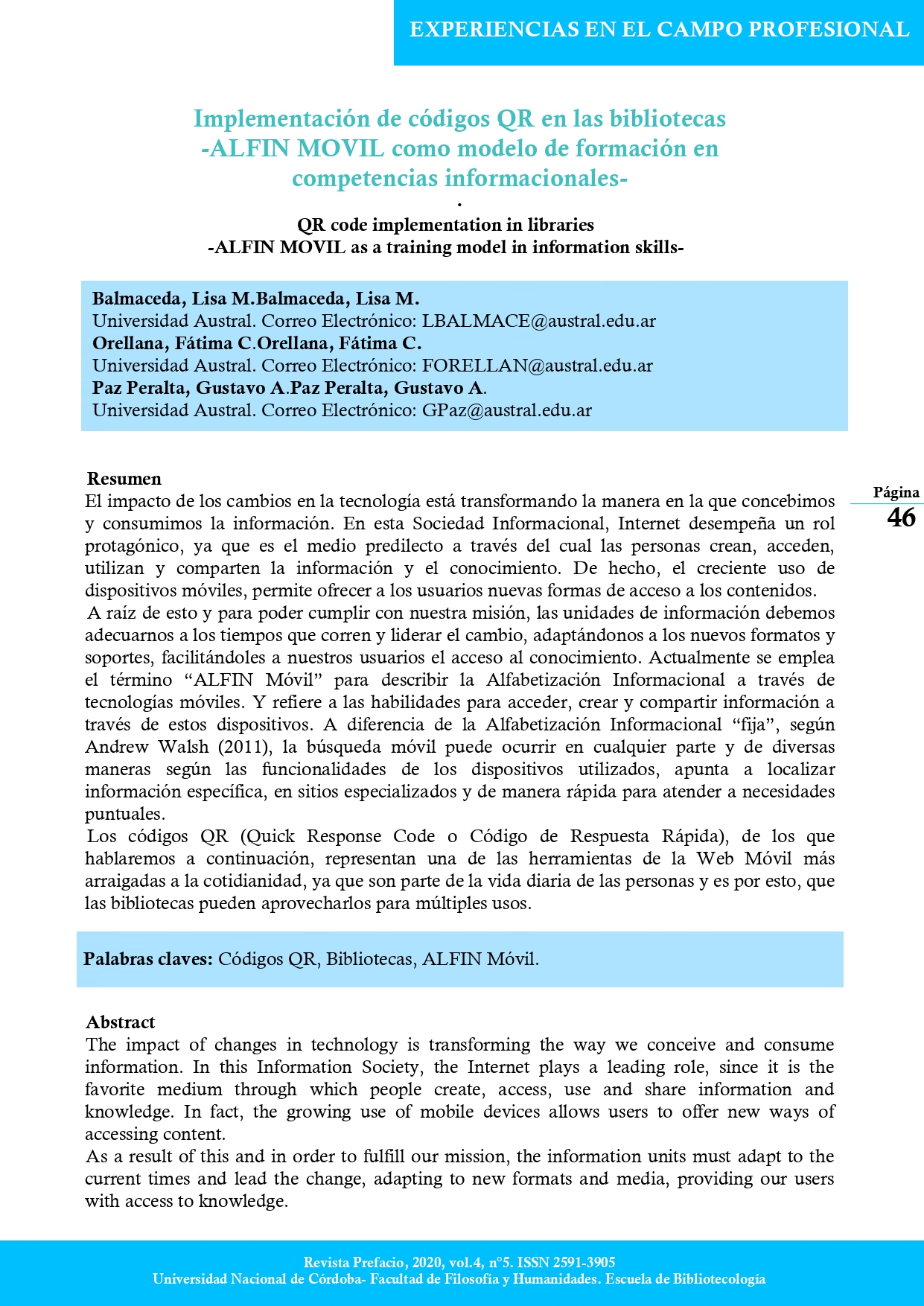QR code implementation in libraries. ALFIN MOVIL as a training model in information skills.
DOI:
https://doi.org/10.58312/2591.3905.v4.n5.31662Keywords:
Libraries, QR Code, Mobile Information LiteracyAbstract
The impact of changes in technology is transforming the way we conceive and consume information. In this Information Society, the Internet plays a leading role, since it is the favorite medium through which people create, access, use and share information and knowledge. In fact, the growing use of mobile devices allows users to offer new ways of accessing content.
As a result of this and in order to fulfill our mission, the information units must adapt to the current times and lead the change, adapting to new formats and media, providing our users with access to knowledge. The term “Mobile Information Literacy” is currently used to describe Information Literacy through mobile technologies. And it refers to the skills to access, create and share information through these devices. Unlike “fixed” Information Literacy, according to Andre Walsh (2011), mobile search can occur anywhere and in various ways depending on the functionalities of the devices used, aims to locate specific information, in specialized sites and quickly to meet specific needs.
The QR codes (Quick Response Code or Quick Response Code), which we will talk about next, represent one of the most deeply rooted tools of the Mobile Web, since they are part of people's daily lives and that is why this, that libraries can take advantage of them for multiple uses.
Downloads








